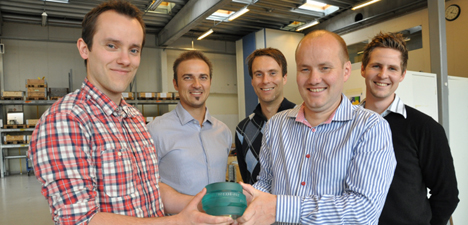The plug has been developed jointly by TCO and Statoil engineers involved in the Valemon and Gudrun projects as well as the Stavanger based leading adviser of the Valemon project. This technology cooperation was triggered by the need for a safe and efficient barrier solution for completion of high-pressure/high-temperature (HPHT) wells on the Valemon and Gudrun fields.

“The engineers at Valemon saw the need for a plug that could stand both high pressure (780bar) and a temperature of 150o C,” says Valemon drilling and well project manager Birger Rye.
“The plug can furthermore remain for a longer period of time in a well liquid which provides a highly corrosive environment to steel and other types of material,” he explains.
Much to save
The successful test marks a milestone in the ongoing effort to reduce the time spent on well completion. As much as three days can be saved per well. HPHT qualification and improvement of the plug design have sparked interest on several other fields. Considerable reduction in rig time has been estimated for Valemon by introducing this solution.
“We expect to save up to 2-3 days of operation per well,” says Statoil’s project manager Jan Helge Gausvik.
“When you have 12 wells you can easily save large sums, especially when you have temporary plugged and abandoned (TPA) wells. It also provides good well control as wells can be opened in a controlled manner by pressurising the tubing and then switching immediately to production. Running the glass plug does not increase the risk as it can be opened by punching the glass by running a spear on wireline if it does not discharge.”
“The HPHT plug, which is a third-generation glass plug from Arna, involves the release of a high-explosive discharge by repeated pressure increases in the tubing,” he explains. “When the glass plug detonates it creates an opening in the tubing, and the glass plug is transformed into fine dust which is blown out of the pipe. The denotation occurs even if 5m densely packed debris covers the plug.”

Robust Concept
According to Gausvik it was previously a problem that the plugs did not detonate during pressure cycles due to densely packed settling of particles from well fluids and other pollution in the well such as dope, etc. A cable (wireline) had to be introduced to open the well, which led to more time and money spent, as well as higher safety risk on the drill floor. “The new technology provides a much more robust concept,” concludes Gausvik.
Written by,
Dag Sunnanå, Statoil